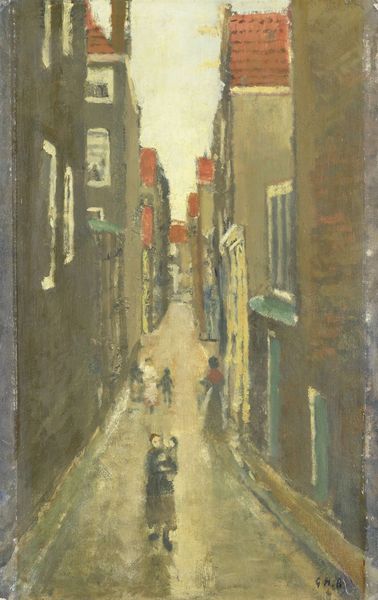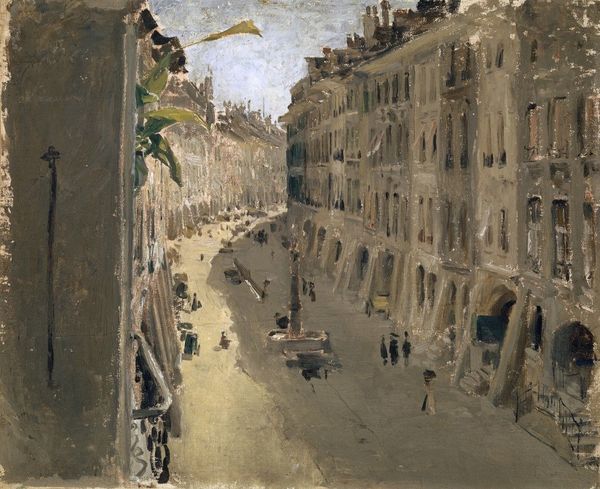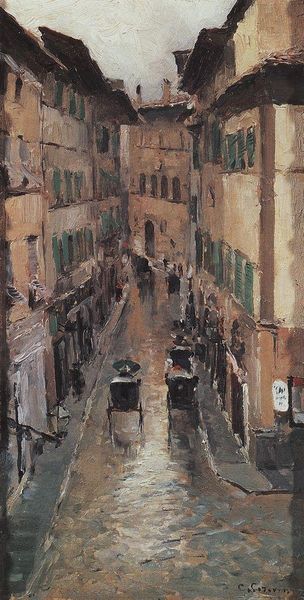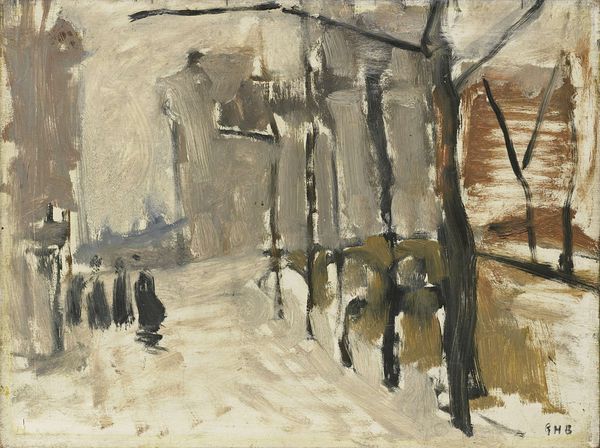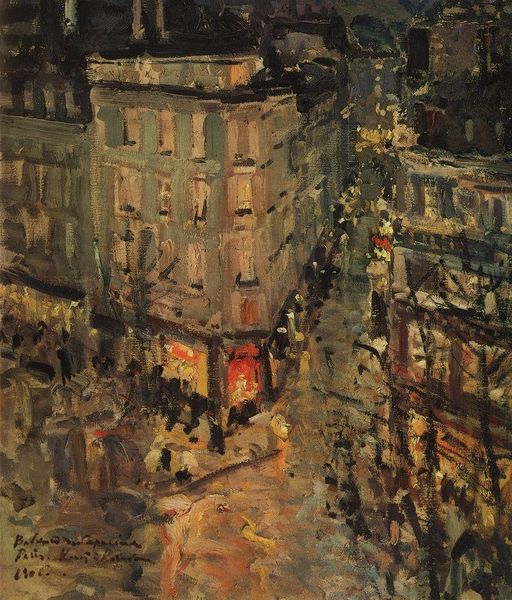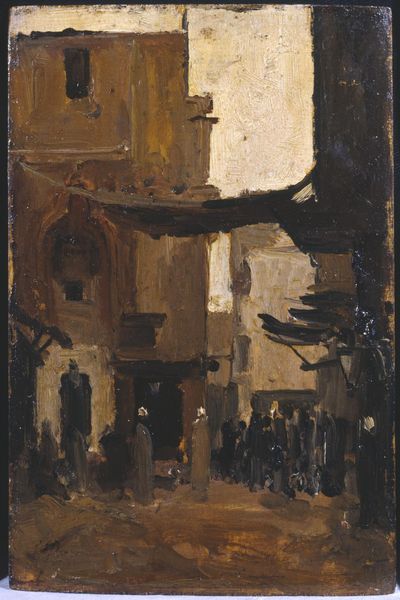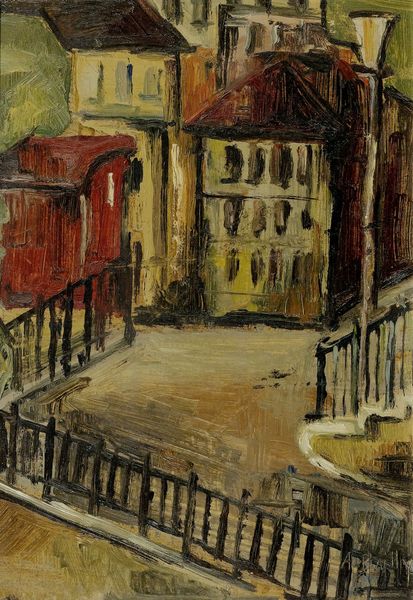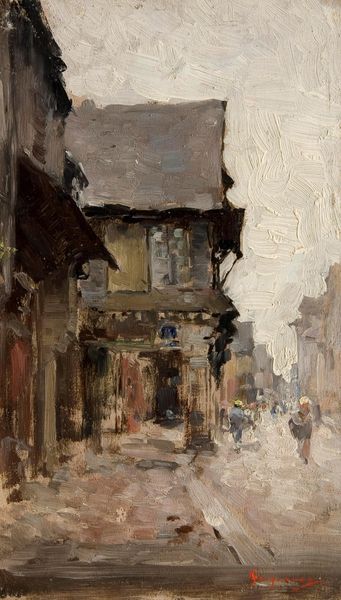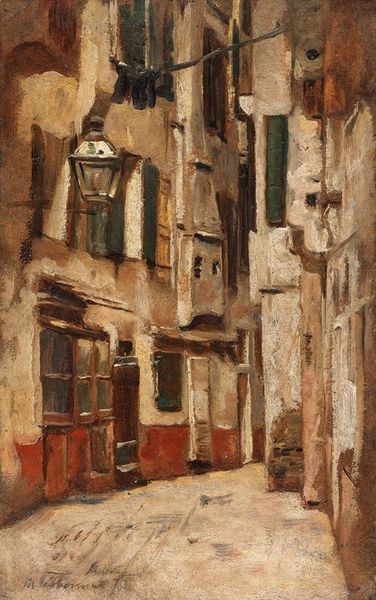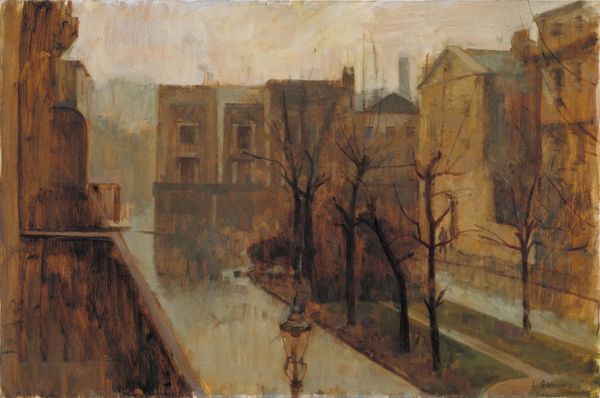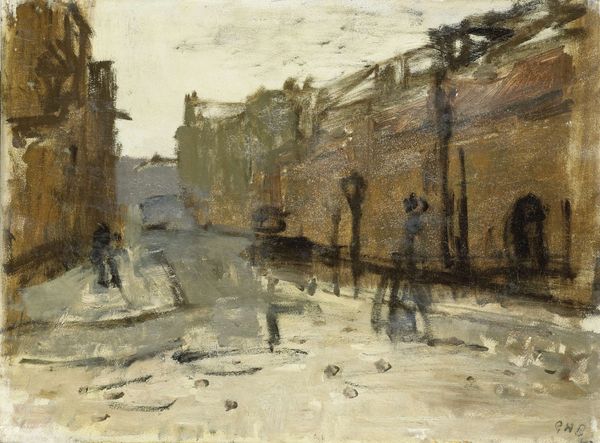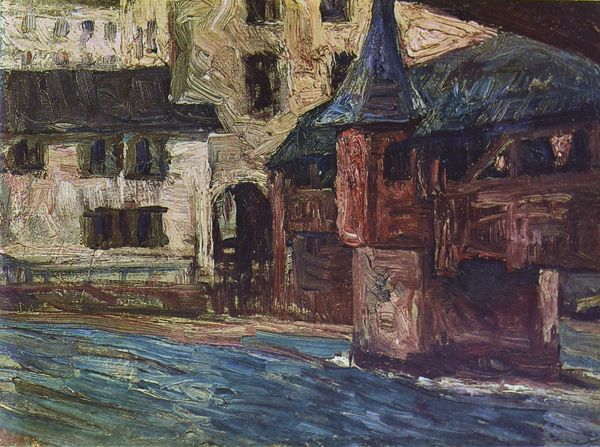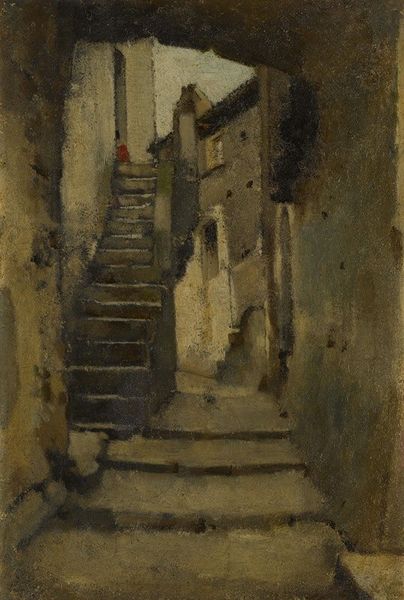
oil-paint, impasto
#
rough brush stroke
#
oil-paint
#
oil painting
#
impasto
#
expressionism
#
cityscape
Copyright: Public domain
Curator: Let’s turn our attention to Richard Gerstl’s “Small Street (Nußdorferstraße)," painted in 1908. The use of oil on canvas really gives a texture and depth, which is very palpable even now. Editor: Immediately, the impasto style grabs me; the thickness of the paint gives such tactile quality, creating almost a relief effect. There’s something moody, even ominous, in the way the light falls on the scene. Curator: That mood might reflect the socio-political context of Vienna at the time, just before the outbreak of World War I. There was immense tension between the old and new, visible in the architecture, culture, and individual psyches. Gerstl captures a sense of unrest, mirroring the societal feeling through his vigorous brushwork. Editor: Yes, the way Gerstl applies the paint – the visible, almost frenetic strokes – echoes that psychological intensity. Notice how the color palette, limited to these muted greens, browns, and grays, only adds to the sense of foreboding, a city holding its breath. Curator: He broke away from the artistic conventions that glorified imperial Vienna and painted modern Vienna with an expressive angst, making the painting particularly significant in its refusal to hide the tension present at that time. You can read it as a response to traditional representations of urban life. Editor: Structurally, the composition seems unstable, too. The buildings loom, and the street sort of vanishes into darkness. It denies the viewer a comfortable focal point. Everything feels a bit…off-kilter. Even the buildings feel to be breathing almost alive due to the impasto technique. Curator: Exactly. And this very personal vision proved deeply unconventional for its time, placing him somewhat outside the Viennese art establishment and even contributing to his relative obscurity later on. Yet, his work embodies that critical transitional period. Editor: Ultimately, looking at “Small Street,” what resonates most is the artist’s singular vision. Gerstl transforms a mundane urban scene into a powerfully emotive landscape, hinting at inner turmoil and perhaps the wider angst of an era. Curator: Yes, and that's what makes it not only a reflection of a specific time but also timeless in its depiction of human emotion through architecture and landscape.
Comments
No comments
Be the first to comment and join the conversation on the ultimate creative platform.
